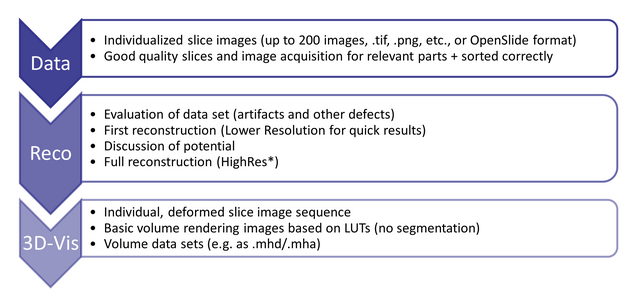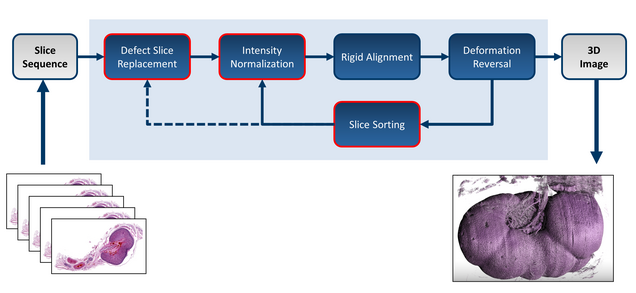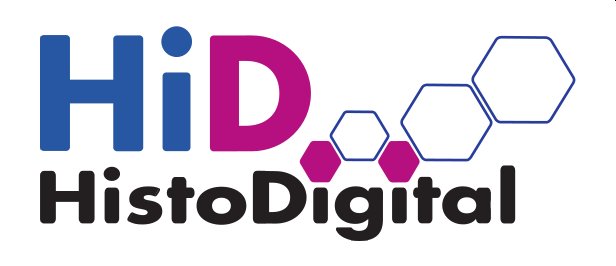Your reconstruction project
You are ready to start your individual reconstruction project? Here is how it works.


Important notes
While we always strive for the best quality reconstruction of your data, please be aware of the following:
The reconstruction quality of histology slice sequences depends mainly on the quality of the slice image data set, and will be adversely affected by artifacts like holes, tears, foldings, missing elements, large distortions, wrong slice order or severe variances in staining, as well as artifacts from scanning (e.g., incorrect, or variable white balance or out-of-focus areas). After a first inspection of the data set, critical defects will be discussed with the customer.
There is unfortunately no guarantee the desired reconstruction result can be achieved with the data set at hand.
- Due to the extensive data size, a reconstruction and visualization of the full data set in original resolution is typically not possible due to computational limitations. The best visual appearance is achieved with images where the pixel resolution matches the slice thickness. This is typically achieved with a magnification of 2x – 5x. The optimal image resolution for the individual reconstructions depends on the target structures of interest and will be discussed and specified during the project.
We recommend to refer to our section about specimen preparation, and a discussion about your goals prior to the project.

